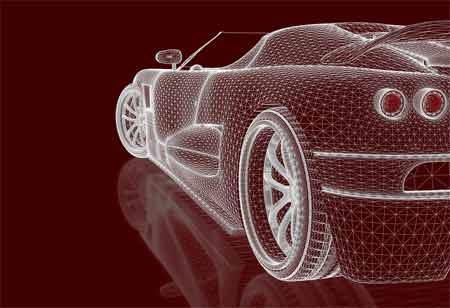THANK YOU FOR SUBSCRIBING
THANK YOU FOR SUBSCRIBING
Be first to read the latest tech news, Industry Leader's Insights, and CIO interviews of medium and large enterprises exclusively from Auto Tech Outlook

By
Auto Tech Outlook | Tuesday, May 23, 2023
Stay ahead of the industry with exclusive feature stories on the top companies, expert insights and the latest news delivered straight to your inbox. Subscribe today.
The automotive industry has made crucial strides in recent years to improve vehicle safety and security, and technology has played a key role in achieving these goals.
FREMONT, CA: As the automotive industry continues to evolve, safety and security have become increasingly critical factors in the design and development of vehicles. The automotive industry has made crucial strides in recent years to improve vehicle safety and security, and technology has played a key role in achieving these goals. This article explores key trends and technologies shaping the future of automotive safety and security.
One of the most significant trends in automotive safety is the adoption of advanced driver assistance systems (ADAS). ADAS technologies, like lane departure warnings, adaptive cruise control, and automatic emergency braking, can allow drivers to avoid accidents by providing real-time feedback and assistance. These technologies use sensors and cameras to monitor the vehicle's surroundings and notify the driver of possible hazards. By providing these advanced features, automotive manufacturers can enhance the safety of their vehicles and reduce the risk of accidents.
Another critical trend in automotive safety and security is vehicle-to-vehicle (V2V) and vehicle-to-infrastructure (V2I) communication. V2V and V2I technologies enable vehicles to communicate with one another and the surrounding infrastructure, such as traffic lights and road signs. This communication can provide real-time information about traffic conditions, road hazards, and other dangers. By sharing this information, vehicles can avoid collisions and improve traffic flow, enhancing safety and security.
In addition to ADAS and V2V/V2I communication, cybersecurity has become a significant concern in the automotive industry. The cyber-attack risk increases as vehicles become more connected and integrated with technology. Hackers can potentially gain control of critical vehicle systems, such as brakes and steering, endangering the driver and passengers. Automotive manufacturers are investing heavily in cybersecurity to protect their vehicles from cyber threats.
One technology that is helping to address cybersecurity concerns in the automotive industry is blockchain. Blockchain is a dispensed ledger technology that can enhance the security and transparency of transactions. In the automotive industry, blockchain can secure vehicle data, such as maintenance records and vehicle history. By using blockchain to secure this data, automotive manufacturers can reduce the risk of fraud and ensure that the data is authentic and accurate.
Finally, artificial intelligence (AI) is increasingly important in automotive safety and security. AI can analyze vast data and identify potential safety issues or security threats. For instance, AI can analyze driving patterns and identify drivers at risk of causing an accident. Additionally, AI can monitor the vehicle's surroundings and alert the driver to potential hazards.
In conclusion, automotive safety and security are critical factors in the design and development of vehicles. By adopting advanced driver assistance systems, vehicle-to-vehicle, vehicle-to-infrastructure communication, cybersecurity measures, blockchain technology, and artificial intelligence, automotive manufacturers can enhance the safety and security of their vehicles and ensure a safe and secure driving experience for customers. As technology evolves, automotive safety and security will remain a top priority for the industry.
 Copyright © 2025 AutoTech Outlook. All Rights Reserved | Privacy Policy | Subscribe | Sitemap | About us | Feedback Policy | Editorial Policy
Copyright © 2025 AutoTech Outlook. All Rights Reserved | Privacy Policy | Subscribe | Sitemap | About us | Feedback Policy | Editorial Policy 



